Lama Surya Das, the American founder of the Dzogchen Foundation, a lay practice center in Cambridge, Massachusetts, was born Jeffrey Miller in Brooklyn, New York, in 1950. He spent nearly thirty years studying with many of the great spiritual masters of Tibet, including Kalu Rinpoche, Dilgo Khyentse Rinpoche, Gyalwa Karmapa, and Nyoshul Khenpo Rinpoche. A dzogchen lineage holder, Lama Surya Das has twice completed the traditional three-year Vajrayana meditation retreat at Shechen Monastery in Dordogne, France. In addition to leading dzogchen retreats, he is the author of Awakening the Buddha Within and Awakening the Sacred, and has translated into English a selection of Tibetan wisdom tales, published in a collection titled The Snow Lion’s Turquoise Mane. This interview was conducted at Lama Surya Das’s home in Concord, Massachusetts, by Helen Tworkov.
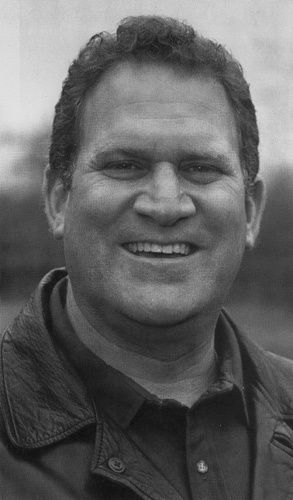
Is there any distinction between Jeffrey Miller and Surya Das? No. But we all have different roles in life. When I visit my mother on Long Island, I’m Jeffrey Miller. If I’m giving a public talk, I’m Lama Surya Das. In the end, we just become more ourselves. As a Zen teaching goes: “When you become you, then Zen becomes Zen, Buddha becomes Buddha.”
For many Westerners, becoming ourselves relates to personality. Is that how you mean it? Personality changes, of course, but our karma relates to our past. When I was a kid, I was a captain of the baseball team. I was an extrovert then, and even though I lived in a monastery and went on a three-year retreat, I’m still an extrovert. Others were introverted, even in the monastery, and they’re introverted now. Becoming more authentic and genuine is the main point, and is not a mere matter of personality.
What is the particular way that dzogchen practice encourages us to become who we are? Buddhism is really about awakening from the illusion about ourselves and the world, and realizing reality—who we are and what is real and how things are interconnected through karma and causation and so on. In a dzogchen text it says, “From the beginning we are all Buddhas by nature, we only have to realize that fact.” So in dzogchen the whole practice of what we call the view, meditation, and action is about awakening to—not just our momentary personality—“self” with a small s—but our true Buddha nature, our original nature.
Does practice change the personality? Practice can change the personality, yes, and hopefully for the better. That’s the idea of spiritual training, of what we call in Tibetan lojong, attitude-transformation or mind-training. All the practices—ethical training, meditation or mindfulness training, wisdom and love training—are to be a better person, but it is also to realize who we are as we are. That seems like a contradiction. On the one hand, we say everything is perfect and divine as it is and we need to accept that and understand it. That is “the great perfection,” or the view/outlook of dzogchen teachings. On the other hand, in the conventional relative sense, we see a lot of suffering, and cruelty and violence around us, and we strive for a more peaceful, harmonious, better world.
One of the common misunderstandings in the West about Buddhism is that this acceptance invites a kind of moral passivity. There’s a funny twist, a tantric sleight of hand, through which accepting things as they actually are brings about the transformation that we all seek. You know how, in a personal relationship, we might want to change our mate but have noticed that if we can finally come to accept them as they are, it actually does change our relations? It works like that.
You were trained by Tibetan teachers who themselves had received traditional monastic training in Tibet. Are you training any of your students the way you were trained? Remember, my teachers were in exile in the Himalayan rim areas—Nepal, Bhutan, Sikkim, Darjeeling—so they were already doing things a little differently. This is the way it has always happened. Change took place when the dharma entered new times and new countries. Like my own teachers, I lead several intensive, silent meditation retreats each year, and give refuge and bodhisattva vows, but I also have lots of weekly classes, seminars, lectures, workshops, an online “Ask the Lama” column, and do teleconferences. Many of my students are on the Internet. Sometimes we sit in a circle when we get together. The extended question-and-answer period, for example, is a distinctly Western development. Such new forms are less hierarchical and more egalitarian and democratic.

Are they just new forms? Is there any change in substance? I think it’s ancient wine in new bottles. What are the new forms? That lay people are teaching? That’s not so radical. Sitting in chairs? That’s not radical. Including women in leadership roles? That’s new, but it’s not very radical. Questioning the traditions? That, too, has been part of the tradition.
And the form of guru devotion? The emphasis in the Vajrayana is definitely on the teacher. The Tibetan Buddhist refuge is not in just the Three Jewels—the Buddha, Dharma, and Sangha. It’s also in the Three Roots—the Lama, the Yidam (or the meditational archetype), and the dharmapalas and dakinis, the internal energies. When we do prostrations, when we chant the refuge, that’s what we’re taking refuge in. Tibetans emphasize that more than the Three Jewels. Tibetans say, “Without the lama, the teacher, how would you even know about the Buddha, Dharma, and Sangha?” So guru yoga is very important. And devotion helps the ego to overcome its own resistance. But you know, not all teachers are gurus. A guru-disciple relationship is fundamentally different from a spiritual friendship, where someone imparts information. You can really trust the spiritual master, the guru, and rely on him or her to lead you where you would never go yourself. A lot of powerful inspiration, wisdom, and guidance gets transmitted that way, if there is trust and devotion present.
Do you pass this emphasis on the guru to your own students? No. Americans will know about Buddha, Dharma, and Sangha without a personal guru or teacher. They don’t live in a rural, agrarian, pre-industrial, oral culture, where only the priests have much knowledge and learning; they inhabit the postmodern Information Age and a literate society.
Now I’m talking here of seeing the guru not from a spiritual point of view but from a cultural and historical point of view. In all religions, learning in ancient times was transmitted through the priesthood. When Gutenberg published the Bible, it was no longer just the priests who had medical knowledge, who were literate and knew about history, religion, astrology, and astronomy. As a result, there was a Protestant revolution. The priests’ position became less important, lay ministers came along, and eventually we had public education and new forms of social structure.
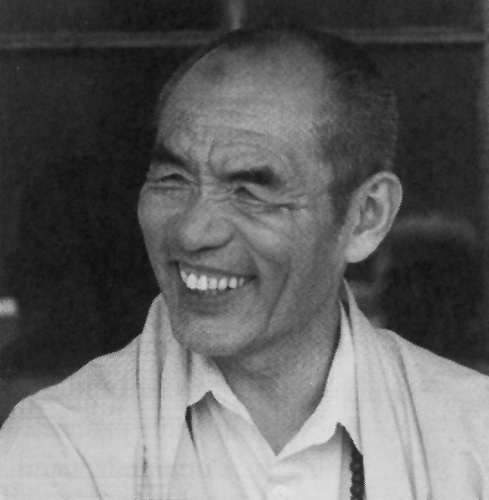
What about aspects of the tradition that depend on the enlightened qualities of the guru? Can that emphasis be maintained? When I look at my own gurus, like the Karmapa or Khyentse Rinpoche, I don’t feel that my spiritual realization matches theirs. I’m more of a player-coach or wise friend than a master-guru or absolute authority. My way of teaching is to gently bring people along, by practicing together with them. I see myself as what Buddha called kalyana-mitra in referring to teachers, which means “spiritual friend-benefactor.”
Students make a teacher. I get together with people, I practice with them, and I teach them how to practice the way I’ve learned to practice. Whether or not they consider me as a guru in the traditional sense or as a spiritual friend—that is sort of up to them.
I have all kinds of different students; some are students, some are dharma teachers themselves. Like my own teachers, I teach according to the different needs, places, and times that I find myself in. There are a handful of students who consider me their main teacher, their guru. I don’t teach them to see me as the Buddha, as Tibetan masters do, but I do help them understand that the practice of devotion helps you to see the Buddha in everyone. And if you can see the Buddha in one person it will help you to see the Buddha in everyone and in yourself.
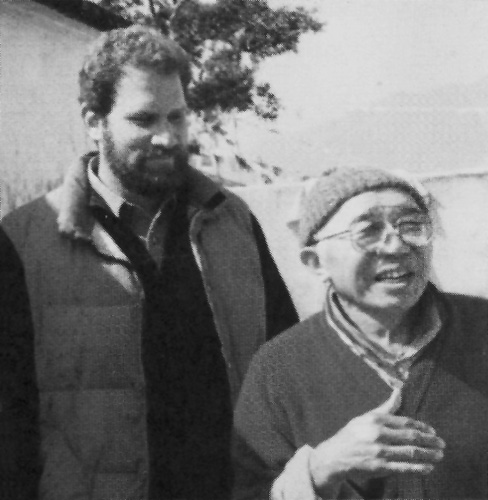
You’ve been criticized by some Tibetans and some of their Western students for calling your center Dzogchen Foundation. What is their problem with your use of that term? Dzogchen has always been considered the highest or the ultimate teaching of Tibetan Buddhism, a kind of a secret teaching for initiates only. It’s not just me who’s been criticized for this kind of thing. Other traditional, learned, elder Tibetan lamas have been criticized for teaching dzogchen openly to Westerners. And Tibetans themselves have been criticized for using certain dzogchen terms in ways that other lamas find inappropriate. In fact, it was after a Tibetan used a dzogchen term to name his organization that various lamas said, “That holy, secret word is now on newsletters and newspapers that are under the feet of people in the subway. It’s bad karma. How could this be? It’s a degeneration of the dharma.” And his students had to explain: “This is a new time and place, and new skillful means must be utilized.”
So it’s not so much of a Tibetan-Western issue as a past versus present dilemma? In this case, yes.
In other cases? Several lamas have said to me that they wished I was more careful with “their” precious lineage. This is where we get into trouble. I say yes, of course, and we’re working to uphold this lineage. We’ve built centers and done everything to bring this lineage to this country, and now this is “our” lineage too.
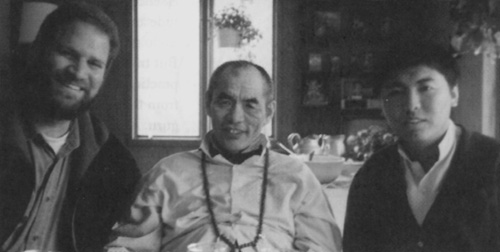
And if a shift is made away from “their” model of guru devotion, is that still “our” lineage? Is that still old wine? Yes. I cannot in good faith tell people that they should see me as a Buddha, as it says in many Tibetan texts. But my own devotion to my teachers inspires certain people—those who have a devotional character, and who can thus benefit from devotional practices—to do the same with their teacher, whoever that may be. So I always have pictures of my teachers on the altars when I teach, and I tell stories about them and the lineage, because there is a genuine inspiration for me when I tell those stories. What I’m really interested in personally is the practicing devotional traditions, and I think that the practices of guru yoga will continue, but not the guru tradition, which can be corrupted by feudal patriarchy.
We’re not born Buddhists, so there must be something that we’re receiving for which we are grateful. Following the dharma forms is a choice. You do not have to be here. Our devotion is born of gratitude for what we receive, not from our parents and local society. And if we have appreciation, gratitude, and devotion of some kind, then we soften up a little bit. Our hearts have been touched and we have more room, more patience for things we don’t understand. The essence of devotion is deep gratitude and appreciation—not form.
But traditionally, the devotional practices could not be separated from the embodiment of the guru. Are you suggesting that they can be? Devotional practices are a very important part of spiritual life—it doesn’t mean devotion to the person, it means devotion to the dharma. We’re not talking about students bowing and scraping but about paying attention, being receptive, and opening themselves and sort of trusting enough to make the leap forward. One of the best forms of devotion is to pay attention, to be passionately interested and continuously engaged in the process of learning. That is how you keep the student-teacher agreement. You come to learn, you’re asking to be taught, and what you give is your attention. That can include asking skeptical questions, intellectual questions, any kind of questions. Devotion and reverence don’t necessarily depend on bows and accolades.
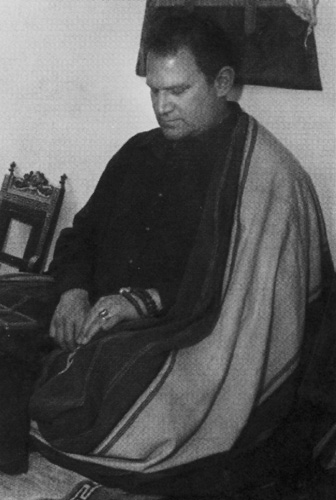
When you went into three-year retreat, did you take ordination?Yes. You’re a celibate monk for that period of time. You’re not a fully ordained bhikkhu with 263 vows or a female nun with 365 vows, but for three and a half years you’re a monk. We wore the monastic robes, shaved our heads, and did the monastic rituals, the acknowledgment and confession, the repentance and purification ceremonies once a month on the full moon, just like in any Tibetan Buddhist monastery. We followed a strict monastic retreat schedule every day, from four a.m. till ten p.m., year after year—for seven years in my case.
Can you see yourself ever leading a three-year, three-month, three-day retreat? No, because I don’t think that form is totally appropriate for Westerners today. It’s too unintegrated. Too many people are thrown into a three-year retreat without preparation and don’t know what to do with that. To go away for three and a half years in Tibet made sense, it was like going to medical or dental school, which you had prepared for during many years; and afterward all those lamas, they had a part in the society and a function, like being a village lama, a teacher, or priest. But a lot of the Westerners who do three-year retreats come back to the world and their own problems and it’s very unintegrated—you lose your family, your career, your children, and everything. It’s very difficult. I’d rather see people doing one-month retreats, three-month retreats, six-month retreats, even, perhaps, a one-year retreat. To do that once or twice in their life, along with the whole practice curriculum amidst daily life year-round, is much more integrated.
If someone sees you as a spiritual friend, is that different than a spiritual teacher? In my own experience, as I began to commit myself more to a teacher, I began to have different kinds of questions. The teacher also began to offer different kinds of answers. The teacher started to get to know me better, and then was in a better position to push my buttons. The more you invest in the teacher-student relationship, the more you can get out of it and the more a teacher can transmit to you, or push you, teach you, and provoke you.
In this regard, Westerners do not seem to cut Western teachers the same slack as they do the Asian teachers. Can you use pushing people’s buttons as a teaching? I try to. But I’m careful about it. You can discourage students that way. The student-teacher relationship has different levels—the general lecturer and attendee relationship is one thing, just kind of exploratory, friendly, light, and lively. Then there’s a student-teacher relationship; and deeper still is the guru-disciple relationship, which is more intense, and needs a safe container where there’s a certain amount of trust that has developed over quite a while. It’s not just a question of: Is this person really an authentic master? But also, is this an authentic student? And is there an authentic relationship?
Each student has to open up, examine their purpose and motivation, purify themselves, and then ask: Is the teacher before them the kind of teacher they can understand? Does the language and the style of the teacher resonate with the student? Some teachers are more intellectual and philosophical, some are more heart-oriented and emotional, some are more devotional-based, and the students, of course, also have different personalities.
Some may need the soft, loving, bodhisattva approach of the peaceful deities, and others a more wrathful, provocative, outrageous teacher, one who stirs up chaos and always pushes you to the edge. You know, a thousand years ago Naropa’s guru was Tilopa, a crazy, bloodshot-eyed, drunken yogi living under a bridge in Calcutta as a beggar, eating the foul offal thrown away by the fishermen. He busted Naropa’s chops through twelve hard years, because Naropa, when he came to him, was a spic-and-span upright abbot and a self-righteous scholar from Nalanda University. But busting his chops really means loosening his self-resistance. You’re spic-and-span, okay; so now get down and clean the toilets, touch the untouchables, and sleep with a roadside beggar woman, Tilopa told him.
So in such ways, crazy-wise Master Tilopa pushed him over the edge. Then how did Naropa get enlightened? Tilopa hit him in the face with a filthy old sandal. There wasn’t any fancy presentation of Mahamudra teachings; but somehow the bubble burst and Naropa realized nondualism, that there was no difference between Tilopa, himself, and every other being—that’s Mahamudra, the great symbol of the ultimate reality.
If you did that in America you’d get sued for abuse. Right, so I don’t do that. But how do we present the essence of that without hitting people in the face with your shoe? Perhaps you try to surprise them, or make jokes, or you engage the principle of aikido, using the force of the opponent to flip them over on their own face. You can surprise people into an Aha! experience of sudden awakening. But you have to do it kindly, with genuinely altruistic motivation, not just frivolously.
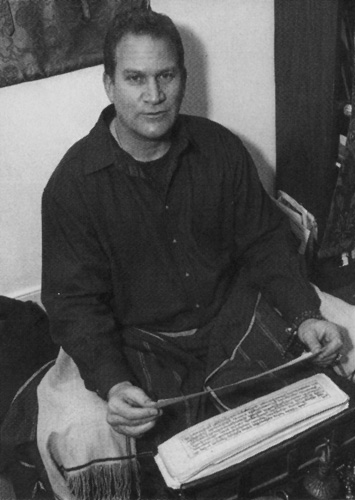
As a teacher, you’re always carefully checking your attention and your motivation, then at some point you become confident that whatever you do will be helpful rather than harmful. I’m much more loose if I’m with my own students who are, again, in that safe container, where they’re asking to be pushed and provoked. It’s a safe container because we already have an agreement of trust and commitment. In that situation I’ll say outrageous things to them.
Such as? Such as I might ask a personal student, if they continually approach me seeking counsel about their love life: “You always have these strained relationships with the opposite sex, have you tried practicing celibacy for a while, or exploring gay relations?” Some people come to my silent intensive meditation retreats because they’re silent and intensive —for example, some who’ve been Zen students—and when it comes time for some intensive chanting, praying, or compassion meditation, or Tibetan yoga and energy practices, they really don’t want to do that. They just want to sit and be silent. And they come to private interviews and ask me to be excused from that, and I say no, that I wish they would do more of those energetic practices besides sitting year-round, that it would be good for them. It’s just a way of pushing the envelope, and seeing what comes up.
Are there any advantages to being a Western teacher? Many students say that they’re inspired by Western teachers because they can communicate directly with us and see how we actually live and deal with the problems that everyone faces. We might have health issues, livelihood issues, family and emotional issues—problems that everyone must deal with in life. I try to be the kind of person who leads by example, from whom my students can see that our character and destiny depends less on what happens to us than on how we relate to it.
But that familiarity itself must have its own difficulties. That’s true, but that’s not necessarily a bad thing. The Tibetan lamas have certain discreet, old-fashioned, clerical-style customs: Traditionally they never eat with laypeople, and, with the exception of their servants, almost nobody knows what they eat or drink, or how much they sleep, or if they are good-natured or not. This leaves a lot of room for naïve projections and transference of all our new-student ideals upon them, like idealized father figures. I don’t have that insulation and protection, as it were, nor do I want it.
In the first five or ten years it was difficult for me to see what was going on behind the scenes with my lama. I only saw the lama in his perfect role as the tantric teacher and old master. I had to learn to separate in my mind the Tibetan man from the perfect Tibetan guru, and not keep confusing the pure, liberating, noble dharma teachings with the local culture or the human noblemen who were representing it. I loved my teachers dearly and feel a tremendous debt of gratitude to them. But if we really take refuge in the Dharma, we’re taking refuge not in a person but in the teachings. The Buddha himself said, “Don’t be devoted to the teacher, be devoted to the teaching. Don’t be devoted to the letter of the law, be devoted to the spirit and practice of the dharma.”
Thank you for subscribing to Tricycle! As a nonprofit, we depend on readers like you to keep Buddhist teachings and practices widely available.